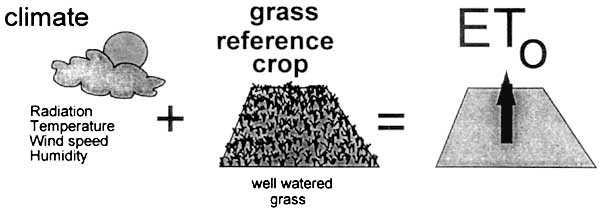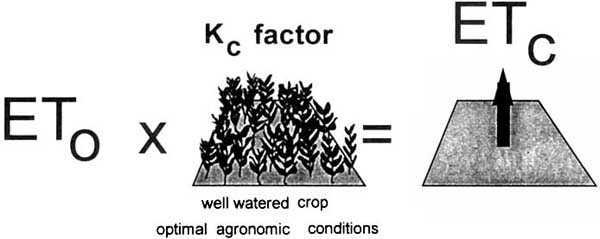For everyone who wants to automate irrigation systems with Raspberry Pis, Open-Meteo now supports ET₀ Reference Evapotranspiration.
ET₀ indicates the evapotranspiration of a well watered grass field. Or, with a few adjustments, it can be used for any kind of plants.
Irrigation systems calculate the amount of transpired water and estimate the available soil water. ET₀ can now be used to forecast how much water will transpire in the next hours or days. If no precipitation is forecasted, it might be a good idea to enable the sprinklers this evening!
ET₀ is given in “millimeter per hour”. 1 Millimeter per hour represents 1 liter of water per square meter. In the graph above you see 0.47 mm of forecast ET₀ evapotranspiration for May 23 at 10:00. Roughly half a liter water will transpire. At night, very low evapotranspiration is expected.
For convenience, daily ET₀ values are available as well as a simple sum over all hourly values. For May 23, 4.49 mm evapotranspiration (= 4.49 liter of water) with very little precipitation (0.19 mm) are expected. The day after, precipitation and evapotranspiration are balanced and no irrigation is required.
Obviously the ET₀ Reference Evapotranspiration are rather high. A well watered grass field has high transpiration rates, but can sustain droughts well therefore irrigation is not required to this extend.
FAO defines a factor “Kc“ to adjust for different plant types. Depending on growth state, maize has an adjustment factor for 0.4 (initial growth state) up to 1.15 (mid season state). A great overview of all factor and plant states can be found at the FAO website.
With “Kc” multiplied with ET₀ you get corrected evapotranspiration for exactly your plant type for different growth stages.
Calculations follow the industry standard FAO-56 Penman-Monteith method and use temperature, wind speed, humidity and solar irradiation. Weather models with up to 2-km resolution are used to provide input tor the Penman-Monteith equations.
Keen users of Open-Meteo might already spotted the weather variable “Evapotranspiration“ in the API Documentation. This evapotranspiration is considering the vegetation type, albedo and available soil water that is assumed by the weather model. Most likely it is significantly lower. The vegetation type could be “forest” or the soil moisture is just insufficient to support evapotranspiration. For a weather model, this information is crucial to maintain water balance. If you want to optimise for irrigation, ET₀ evapotranspiration is the way to go.
Hourly and daily ET₀ Reference Evapotranspiration forecasts are now available in the Open-Meteo APIs and can be used for free for non-commercial use without an API key!
In the next few month, many new features for Open-Meteo are in development like a long-term weather archive and will be announced in this blog!






